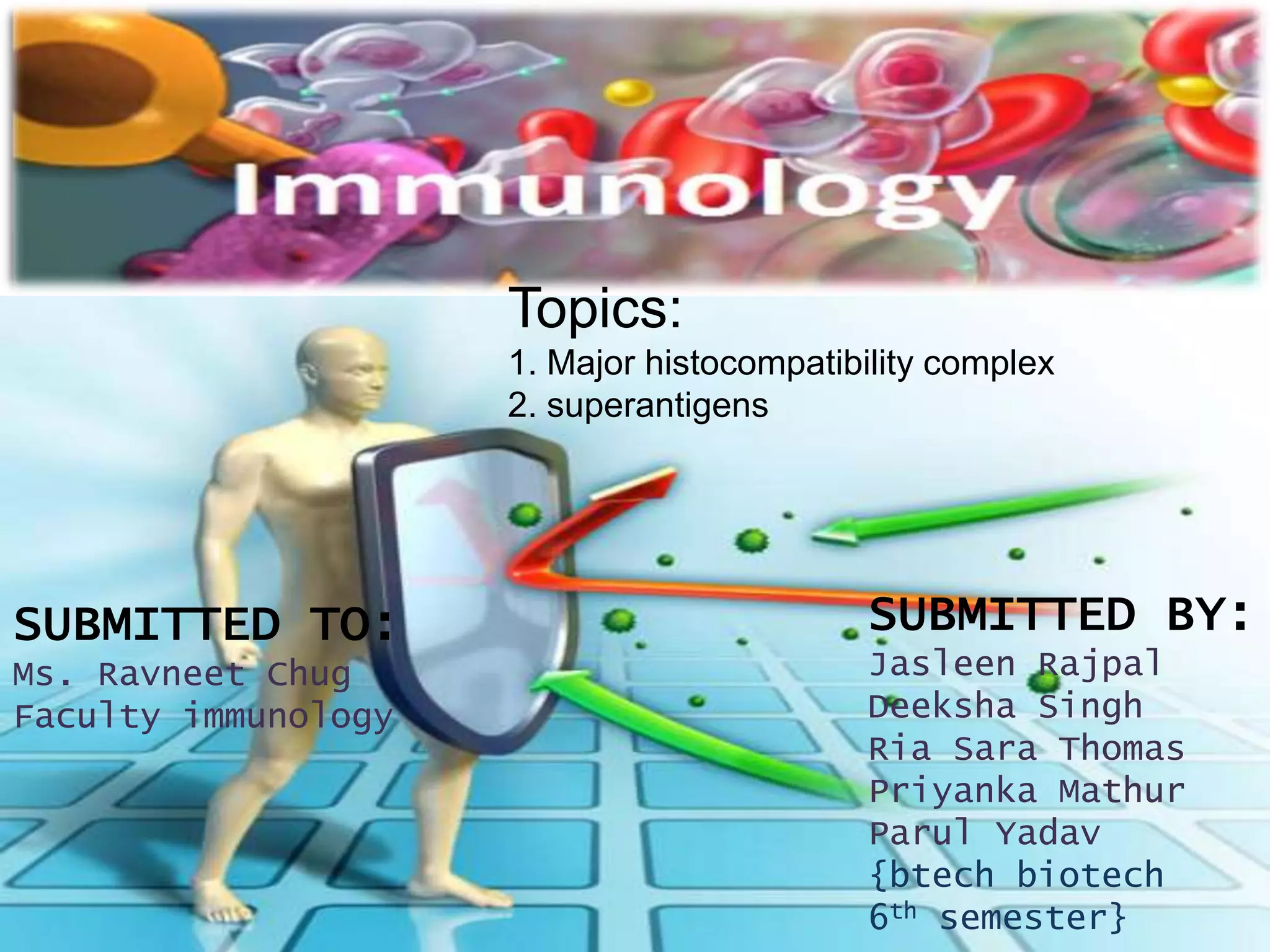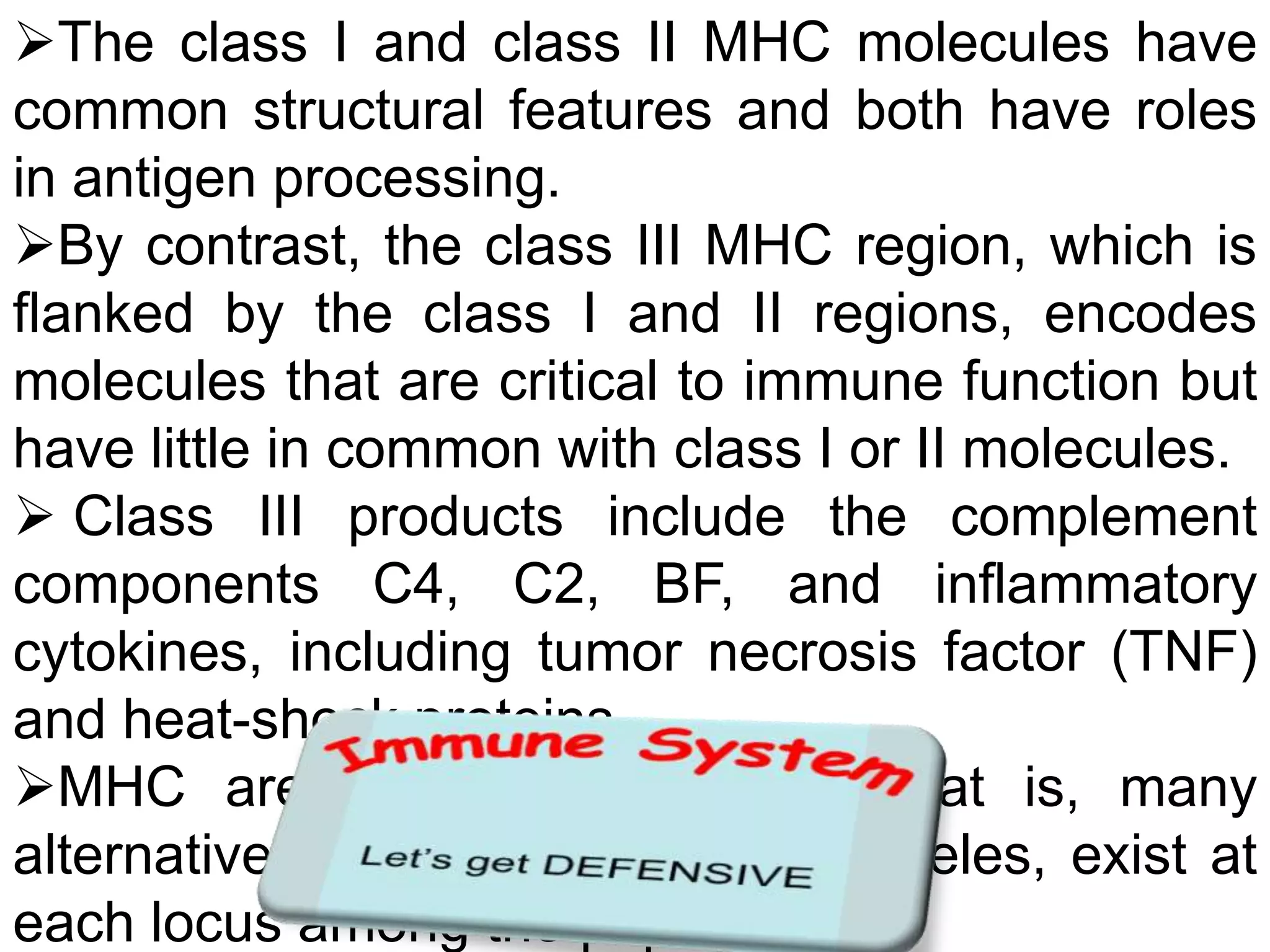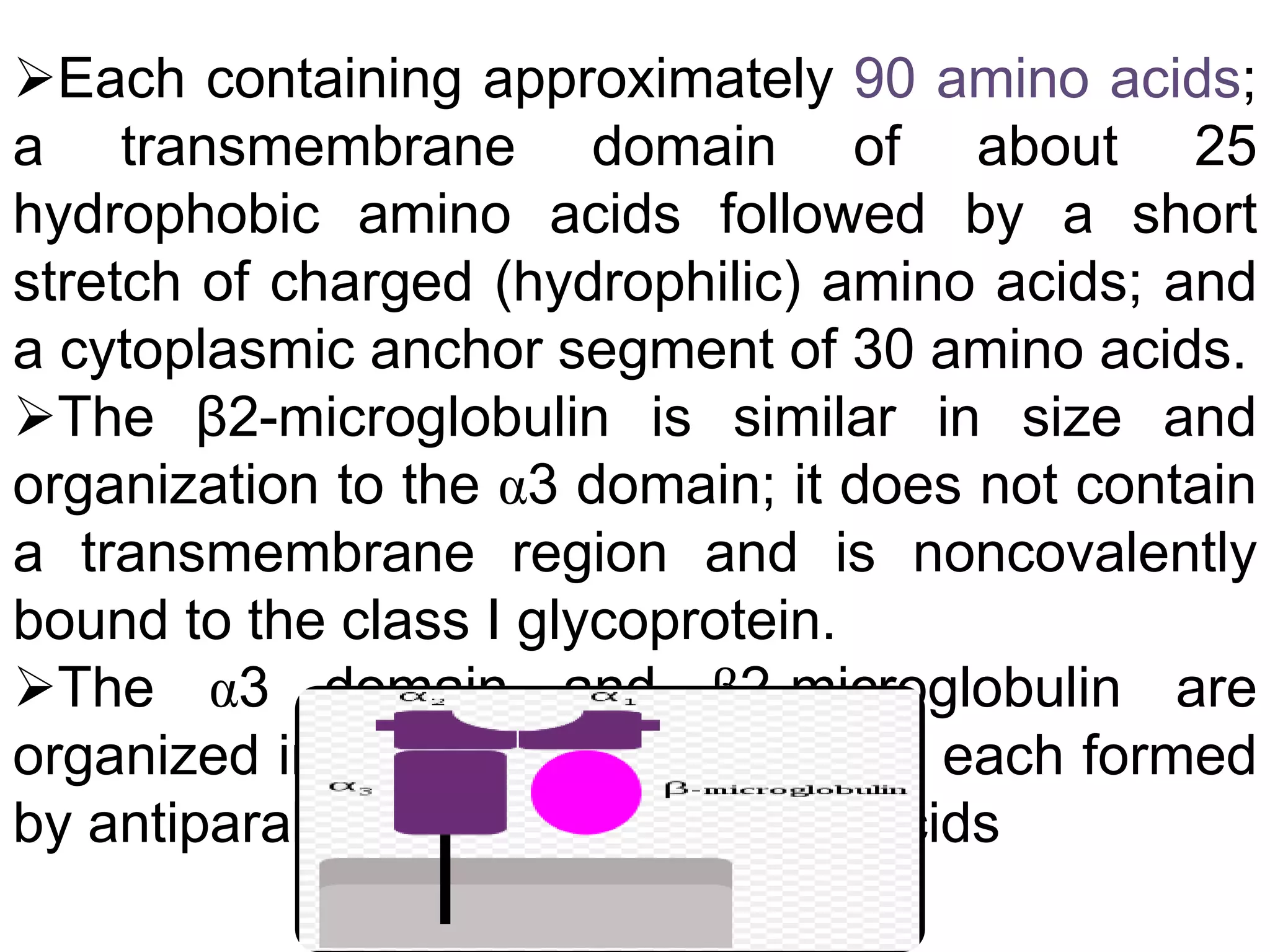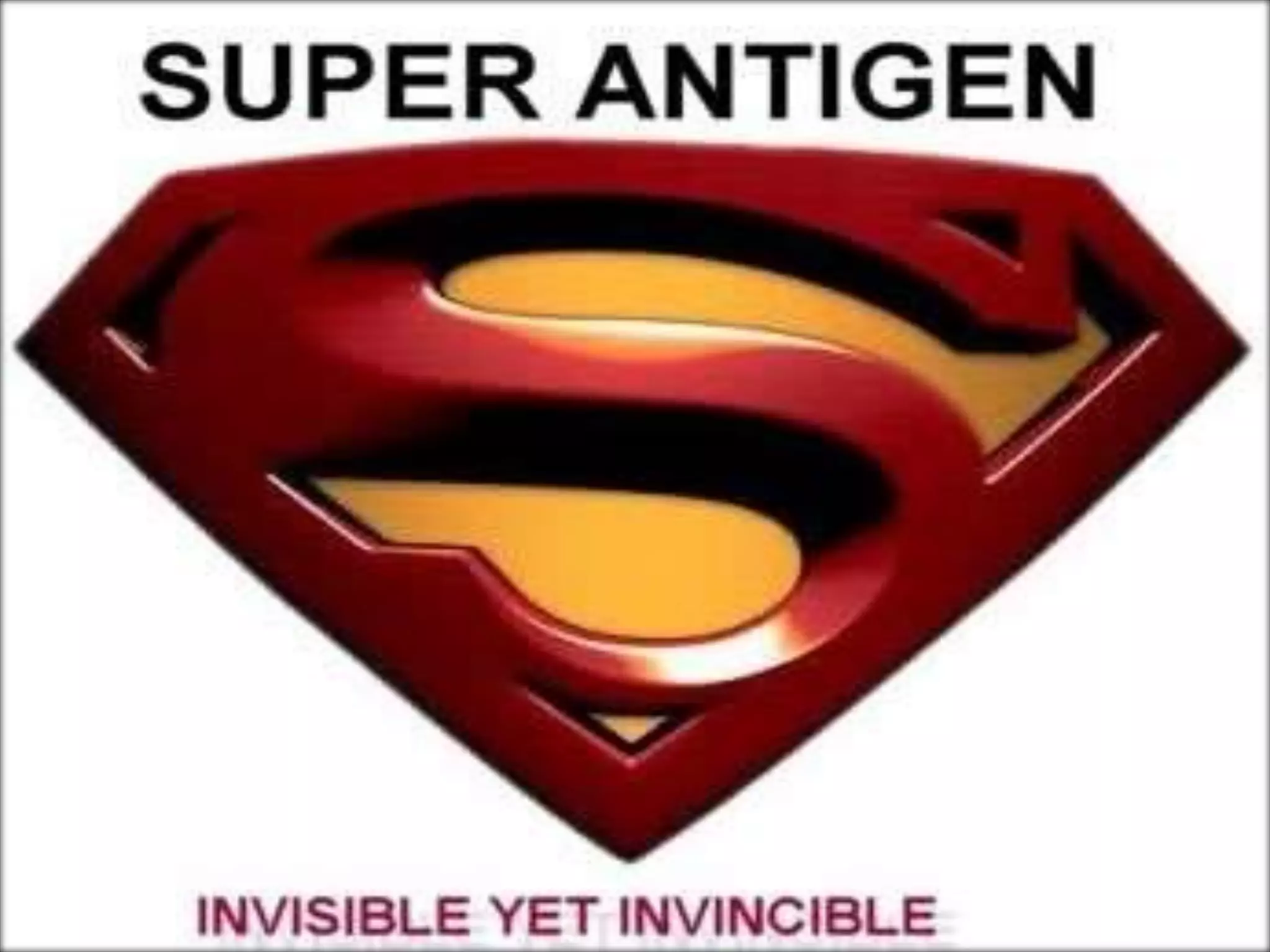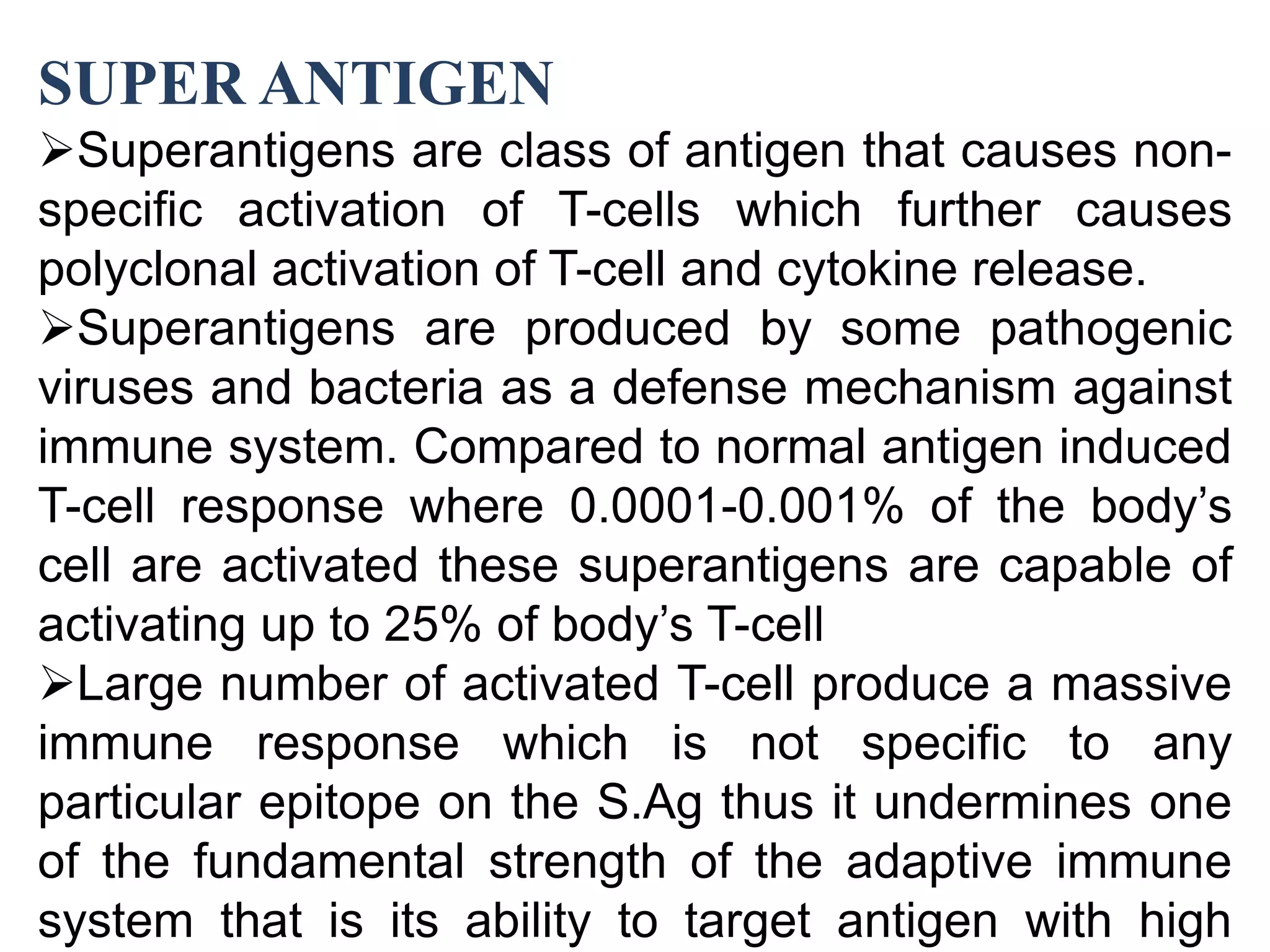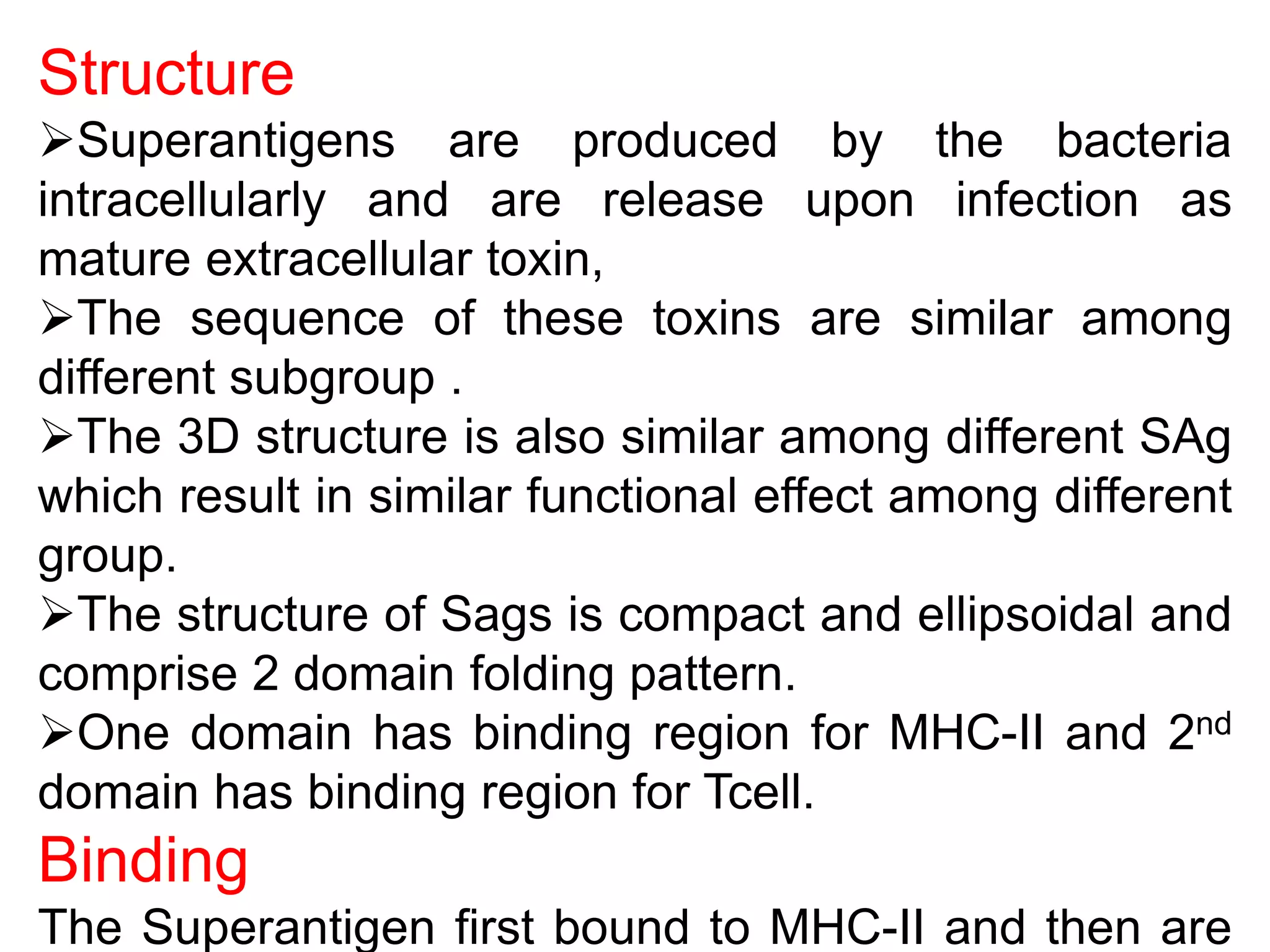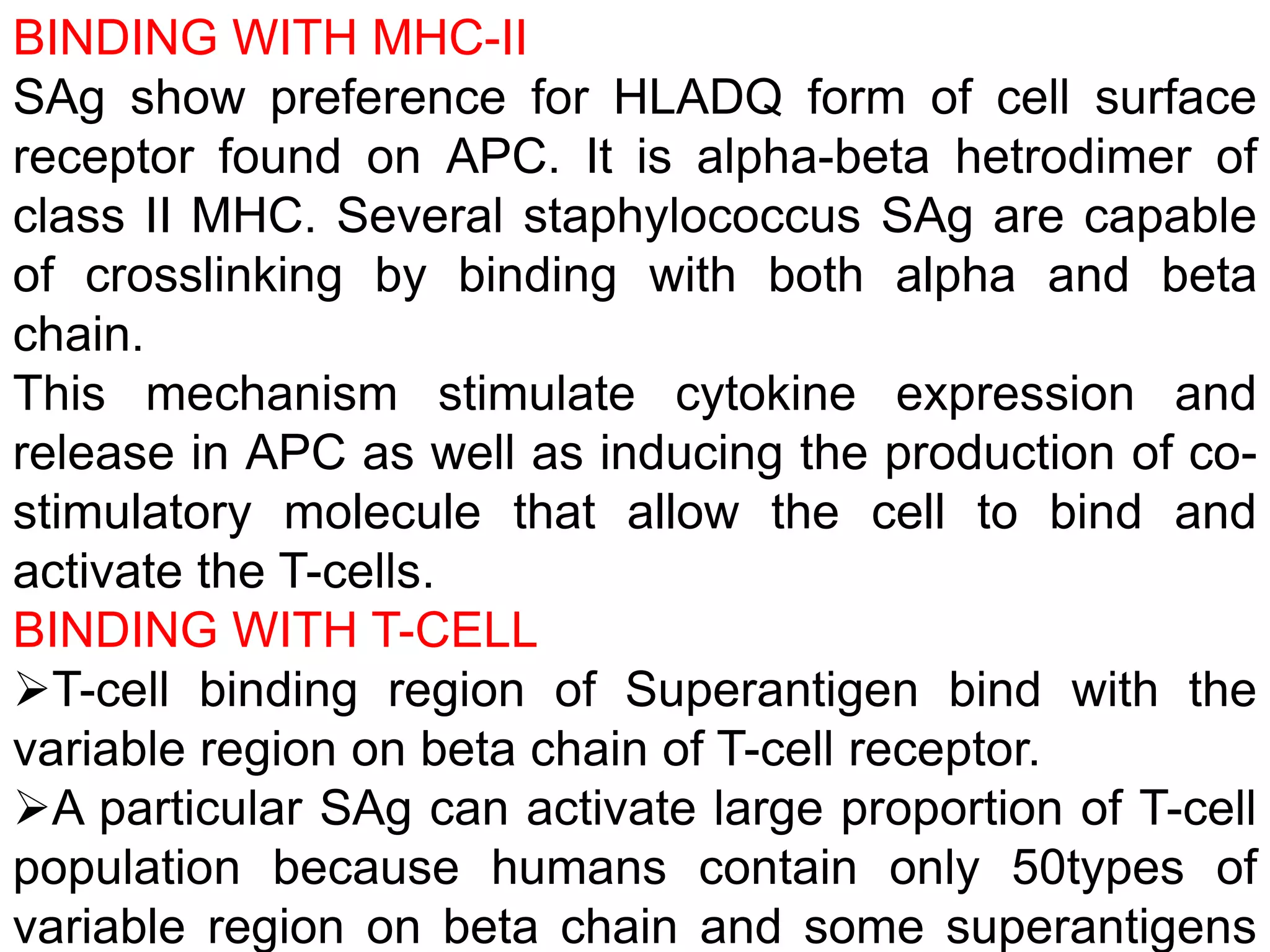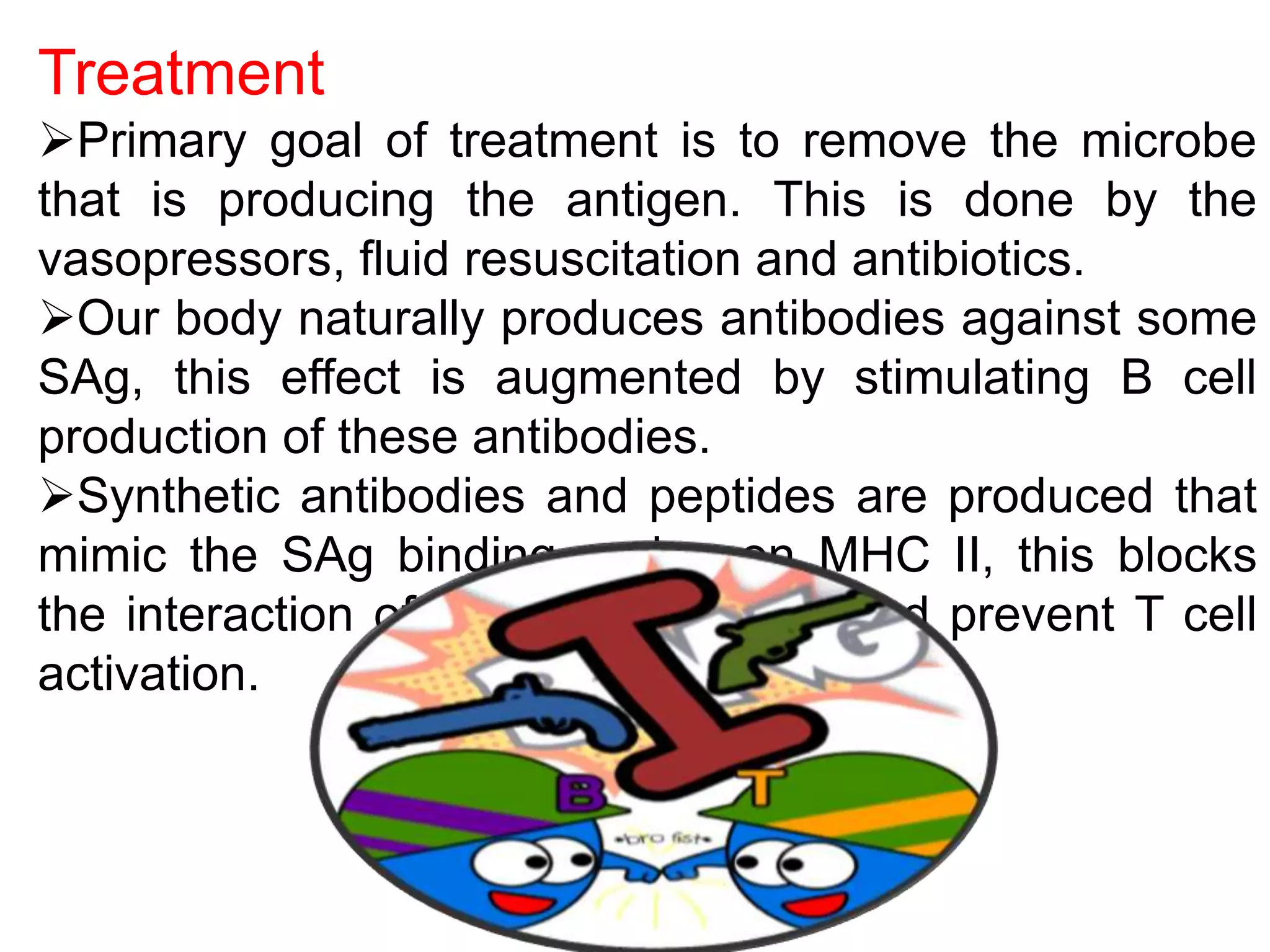The document provides an in-depth overview of the major histocompatibility complex (MHC) and superantigens, detailing their structures, functions, and roles in immune responses. MHC is crucial for T cell recognition and plays a significant role in autoimmunity and disease susceptibility, while superantigens can cause a massive, non-specific activation of T cells, leading to severe inflammatory responses. The treatment for superantigen-related issues primarily focuses on removing the pathogens and enhancing the body's antibody response.
